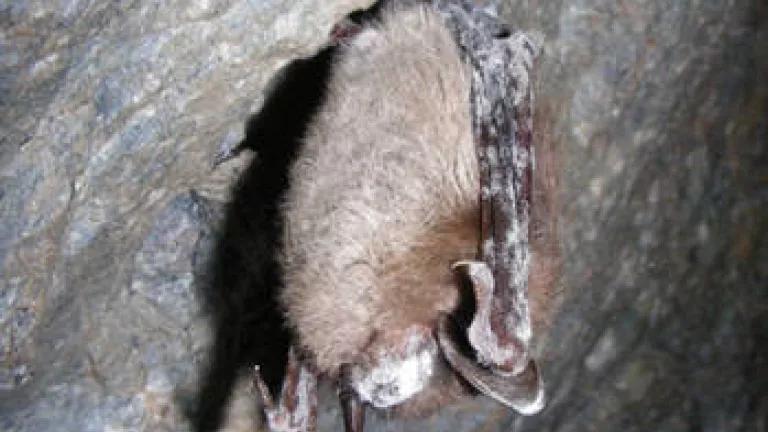
Two weeks ago I reported that white-nose syndrome had been documented in Hellhole Cave – West Virginia’s largest and most important cave – home to half of the world’s remaining population of endangered Virginia big-eared bats. I also pointed out that because of this subspecies’ vulnerability to extinction, the Smithsonian’s Zoo had begun an effort to establish a captive population of Virginia big-eared bats in the event that they would be needed to re-establish the subspecies in the wild.
Two stories coming out recently point to mixed news for Virginia’s big-ears. The first is that the efforts to maintain a captive population of these bats have not been particularly successful. Out of 40 bats originally collected for the project, only 11 remain alive. The Zoo says that maintaining them in captivity has been difficult due to the fact that the bats stress easily and it’s difficult to replicate their natural feeding conditions. If we needed to rely on this population to re-establish Virginia big-ears in the wild, we would be in trouble.
The good news is that we may not need to – at least not yet. Exploration into Hellhole Cave revealed that while many of its inhabitants were dead or likely to die from white-nose syndrome, the Virginia big-ear bats appear to be unaffected. Not enough is understood about WNS to know why Virginia’s big-ears have not yet succumb to the fungus, but experts speculate that it may have to do with differences in the species biology including a preference for very dry and very cold areas and the fact that they rouse more quickly than other species.
The same isn’t true for the cave’s other inhabitants, though. The floor of the entrance to the cave was littered with little brown bats. And WNS infection levels for clusters of the cave’s endangered Indiana bats ranged between 12-50% - similar to patterns found during the first year of infection in other northeastern caves that now demonstrate between 50 - 90% mortality for these species.
At a budget hearing on the hill yesterday, Secretary Salazar vowed that white-nose syndrome would be a high priority for the Interior Department. However, the current budget proposal contains some significant cuts from last year – particularly for endangered species – and doesn’t contain any funds specifically allocated for white-nose syndrome research. The senate has the ability to make changes to the proposed budget and to set aside funds to be used specifically for researching white-nose syndrome. Yesterday, Senator Patrick Leahy – who last year helped secure $1.9 million for WNS – indicated his concern with the issue again.
As news comes out today that Maryland is now likely to join the ranks of states with its first case of white-nose syndrome, we hope that more representatives on the hill will join Leahy in pushing Interior to increase funding for this mysterious disease that is quickly devastating our bat populations.
Image credit: USFWS

